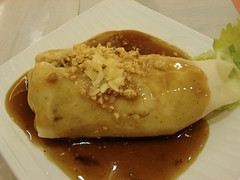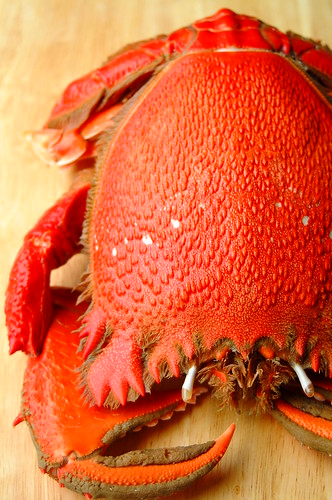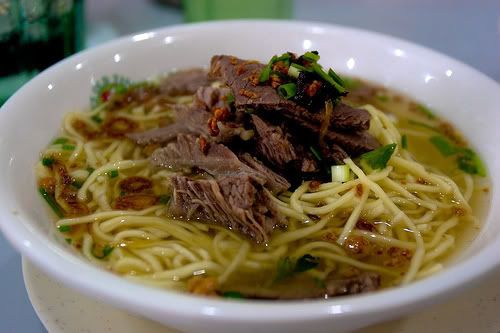
Before you start any recipe, you should gather all your ingredients and utensils together.

Place the empanada dough on a floured counter top. Roll the dough out into a 1/8 inch thick layer.

Remove the excess dough from the cut out circle. Place your filling of choice in the center of the circle. Here I use a little pizza sauce, shredded cheese, and pepperoni slices as the filling.

Carefully fold over the circle with contents into a semicircle. Crimp down the edges with a fork. If the edges won't stick together, wet your finger and rub it along the inside edge of the dough and try again.

Finish the empanadas by deep frying in vegetable oil at 360 degrees for 1 to 2 minutes per side. They should be lightly golden. Drain on paper towels and serve warm.
Ingredients3 cups flour (plus a little more for kneading) 1 teaspoon salt 1/2 cup cold water 1 egg 1 egg white 1 teaspoon vinegar 3 tablespoons shortening Directions
-In a bowl, beat the water, egg, egg white and vinegar together. Set aside.
-In a separate bowl, mix together the 3 cups of flour and salt.
-Cut the shortening into the flour mix with a pastry blender or two butter knives. Make a well in the center of the flour mix and pour the liquid ingredients from the first bowl into the center.
-Mix the wet and dry ingredients with a fork until it becomes stiff.
-Turn the dough out onto a lightly floured surface. Knead it just until all the flour is incorporated and the dough is smooth.
-Wrap the dough in plastic and refrigerate for at least 1 hour, but never more than 24 hours.
-Prepare the work surface by lightly flouring the area where you plan to roll out the dough.
Tip: If you want to keep the dough longer than 24 hours, you can freeze it.













